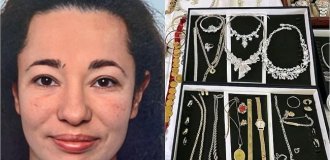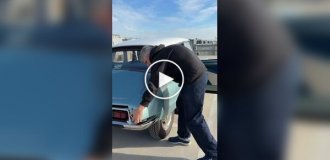Accidental discoveries made by scientists out of stupidity and even error, but they changed the course of history forever (4 photos)
The history of science is full of examples where the greatest discoveries were made by chance or even stupidity. They show that science does not always move forward thanks to strict planning. Accidental discoveries can be key to progress, and sometimes the simplest mistakes can become the starting point for great discoveries. 
Penicillin
In 1928, Alexander Fleming accidentally left one of his bacterial cultures on the table. When he returned, he saw that mold had killed the bacteria around it. Thus, the first antibiotic, penicillin, was discovered, which changed medicine.
Insulin
In 1921, Canadian scientists Frederick Banting and Charles Best were trying to find a cure for diabetes and accidentally discovered that an extract from the pancreas of dogs helped lower blood sugar levels. This was the discovery of insulin, a drug that has saved millions of lives around the world.
Microwave oven
In 1945, engineer Percy Spencer, while working with a magnetron (a device for radar), noticed that a chocolate bar in his pocket had melted. This was the beginning of the development of the microwave oven. 
Super Glue
In 1942, chemist Harry Coover was researching substances to make clear plastics for telescope sights when he accidentally discovered cyanoacrylate, a substance that stuck to everything. A few years later, his discovery became a commercially successful product: super glue.
X-rays
In 1895, physicist Wilhelm Roentgen was researching cathode rays and accidentally discovered "unknown rays" that could pass through dense materials, leaving a trace on a photographic plate. After experimenting, he realized that the rays could penetrate the human body, and X-rays became an integral part of medicine.
Plastic (Bakelite)
In 1907, Leo Baekeland tried to create a replacement for varnish, but by mistake invented the world's first heat-resistant plastic - Bakelite, which was later used in everything from electrical insulation to household items. 
Vaseline
In 1859, Robert Chesebrough noticed that oil workers were using a thick substance that collected at oil wells to heal cuts and burns. Intrigued, he refined the substance, removing impurities, to create Vaseline. Chesebrough later even demonstrated its safety by applying it to wounds daily to prove its healing properties.
Saccharin
In 1879, chemist Constantin Fahlberg, while researching coal tar, accidentally discovered that his fingers tasted sweet. He realized that it was due to the substance he was working on. Soon, saccharin became the first artificial sweetener, which changed the food industry, especially for people with diabetes.
Pacemaker
In 1956, engineer Wilson Greatbatch was building a device to measure heart rhythms when he accidentally inserted the wrong resistor. Expecting a different result, he found that the device began to reproduce a rhythm similar to a heartbeat. This insight led to the creation of the first pacemaker, which saved millions of lives. 
LSD
In 1938, chemist Albert Hofmann synthesized the substance lysergic acid diethylamide (LSD) and a few years later accidentally ingested a microscopic amount. He experienced powerful hallucinations and realized that he had discovered a psychoactive substance. LSD later became a cultural icon in the 1960s and revolutionized the study of consciousness.
Dynamite
Alfred Nobel tried to make nitroglycerin safer for use in construction. One day, after mixing it with kieselguhr (a type of sedimentary rock), he discovered that the mixture exploded only when hit hard. This is how dynamite was born - a powerful explosive that revolutionized industry and construction.





























